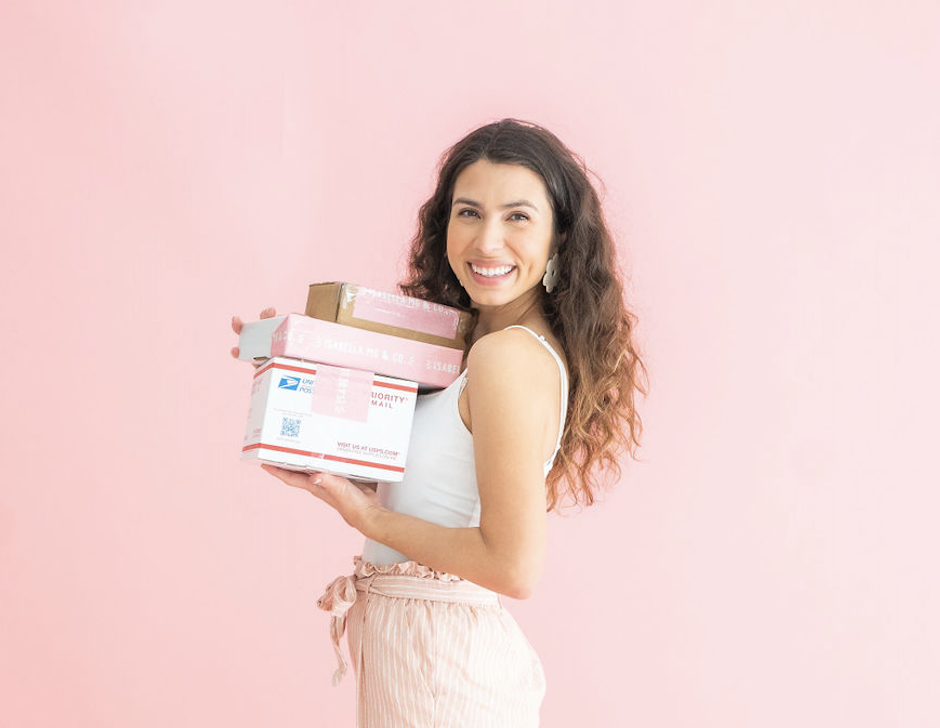326 | The State of Trade Shows in 2024 with Katie Hunt
I have been doing so much good content for other people and I’m doing my best to bring it back around so that you all have access to it and know about these resources.
Recently, the team of Aeolidia asked me to weigh in with my thoughts on the changing landscape of wholesale trade shows for their blog. The post features comments from Arianne Foulks of Aeolidia, Abby Glassenbeg of Craft Industry Alliance, Morgan Cros, the founder of Original’s Duckhead, and myself — all of us shedding light on our thoughts about in-person wholesale trade shows as we head into 2024.
I used this post as a starting point for this week’s podcast episode. We’re going to dive deeper into my personal thoughts on the state of wholesale trade shows and elaborate on some of my comments made in the blog post.
Today’s episode is sponsored by our Unlock Buyer Secrets Interview series. To make a strong first impression with wholesale buyers, we need to do a few things really well:
We need to make it easy for stores to purchase from us
We need to have clear pricing and terms & conditions
We need to clearly communicate and add value at each touchpoint
We need to focus on building strong relationships with our customers.
And all of this becomes infinitely easier when we actively listen to our customers. This on-demand interview series will give you a competitive edge by providing an exclusive window into what buyers want and need from you. And, the best part, it's only $27 bucks.
The State of Trade Shows in 2024
Trade shows, although costly and time-intensive, remain a valuable way for wholesale buyers, sellers, and industry leaders to connect in ways that aren’t necessarily possible online.
From the seller side, wholesale trade shows allow product makers to introduce their products to a wide range of buyers including big box stores and independent retailers.
Our Paper Camp alumni have met buyers from Target, Anthropologie, Starbucks, Container Store, Selfridges, William Sonoma, and thousands of independent retailers from around the world at trade shows.
These shows provide opportunities to get feedback on your product line, build relationships with new and prospective customers, and connect with suppliers and sales teams… the list of benefits goes on and on.
I’ve shared this in the past but I met some of my favorite suppliers at trade shows — who helped me reduce my production costs by up to 15%. And, I met sales reps who expanded my sales reach in different geographic areas, both of these relationships put more profit back into the business.
From the buyer’s point of view, trade shows enable them to hold, see, and touch products in real life to ensure that they’d be a good fit for their store.
For example, consider the buying process for candles… in-person, you can smell the candles, see the size of the vessel, and clearly see the packaging. It’s hard to translate that online.
At trade shows, retailers can also be more efficient with their buying time and energy. They can purchase from a large number of makers, selling a variety of product categories in a shorter amount of time than it would take for them to filter through online sales platforms or visit individual wholesale websites. Not to mention, it's all under one roof.
As you can see, the face-to-face connections and sales opportunities at trade shows are a valuable tool to both wholesale buyers and sellers.
But, the trade show landscape has changed so much since I started exhibiting in 2009, and particularly so over the last three years.
Three Shifts I’m Seeing in Trade Shows in 2024
1. More choices
Before the pandemic, we saw large numbers of creatives exhibiting at a select number of trade shows.
For example, we used to have 75 – 100 of our Proof to Product alumni exhibiting at NY Now, with much smaller groups exhibiting at other shows.
In 2023, we had a lower concentration of alumni exhibiting at each show, but we had folks exhibiting at a wider range of shows including NY Now, Shoppe Object, Atlanta Mart, Las Vegas Market, One of a Kind, Dallas Market, Noted, Top Drawer in London, Toronto Gift as well as shows in Australia and Japan.
Buyers and sellers have more options when it comes to trade shows. The large international gift shows are still popular but so are regional shows, industry-specific shows, and hybrid shows that combine wholesale & retail sales opportunities.
Within on Proof to Product community, we’re seeing wholesale buyers and sellers experimenting with new and different shows to see what works best for their businesses and budgets.
We’re also seeing younger businesses teaming up in shared booths or participating in shared exhibiting space within shows, like the GCA villages at NY Now, Atlanta, or Dallas.
2. More incentives
With the rise of more trade show options, it is critical for trade show management to take good care of their current exhibitors and attendees to keep them coming back year after year.
For example, several trade shows have begun including wall packages with their booth fees to make it easier for exhibitors to build their booth displays.
Previously, exhibitors would need to bring or install their own walls, but providing walls for exhibitors and including it in the exhibiting fees saves on set-up time, eliminates the need to source their own walls, and provides peace of mind knowing that the walls will be installed when they arrive.
These types of incentives not only factor into as seller’s decision to exhibit for the first time, but it also makes it easier for them to re-commit for future shows.
3. Buying patterns have changed
I’ve interviewed dozens of retailers over the last 12 months and their buying strategies have shifted. A few years ago they were placing less frequent and larger orders, oftentimes at trade shows where they could see the products in person.
With the rise of Faire, retailers are placing smaller, more frequent wholesale orders. This shift is partly due to the buyer incentives that Faire offers (extended payment terms and free shipping being the main ones) but it also has to do with retailers more carefully managing their cash flow and how much money they have tied up in inventory.
How does this relate to trade shows?
Buyers are using in-person trade shows as a scouting opportunity to see products, meet with brands, and yes, many people are writing orders at the show.
But, many buyers are also taking information from brands at shows and then placing orders online later — later that day, later that week or month, or sometimes several months down the road. Because of this, we’re seeing a longer timeline for wholesale sales conversions, in-person and online.
The Evolution of Trade Shows
Trade shows are definitely in a state of evolution. Wholesale buyers and sellers are more discerning about where they are spending their time, energy, effort, and money. I think we’ll see a continued rise in the popularity of the smaller, industry-specific shows where buyers and sellers can not only conduct business but also build stronger relationships. Face-to-face connections and seeing products in person will always be the best source of new sales.
Quick Links
Here is a quick recap of links to other helpful blogs and podcasts shared in this post.
320 | The Challenges Of Bringing A New Product To Life With Zeba Parkar, Treleaf
317 | The State of Independent Retail with Jen Palacio & Katie Wilson [Part 1]
317 | The State of Independent Retail with Jen Palacio & Katie Wilson [Part 2]
232 | Working with Sales Reps with Carina Murray, Crow & Canary
314 | Shopify Invests in Faire. What This Means for You with Katie Hunt
Did you know that 49% of your customers want to hear from you on a consistent basis? Yet only a small percentage of product makers are actively sending monthly emails to their direct-to-consumer and wholesale customers.
When I asked our community why they don't send more emails, they said they weren't sure what to say or how often to send those emails, and their biggest pain point was perception. Nobody wanted to come off as salesy or pushy. They didn't want to bother anyone, so I kindly reminded them that if people don't know about your product line, they are not going to purchase it.
Email marketing is hands down one of the best ways to create long-standing strong connections with our customers. So, sending consistent nurture emails, leads to repeat orders and it leads to larger orders. But sitting in front of a blank screen can feel really intimidating.
If you have struggled with what to say or when to send those emails, how to plan out your email marketing strategy, I want you to grab our free email marketing guide that has helped hundreds of product makers plan out an entire year's worth of emails.
Download These Quotables to Save and Share

Connect with Katie Hunt
Katie Hunt is a business strategist, podcaster, mentor and mama to four. She helps product based businesses build profitable, sustainable companies through her conferences, courses and coaching programs.
Website: prooftoproduct.com | Instagram: @prooftoproduct











